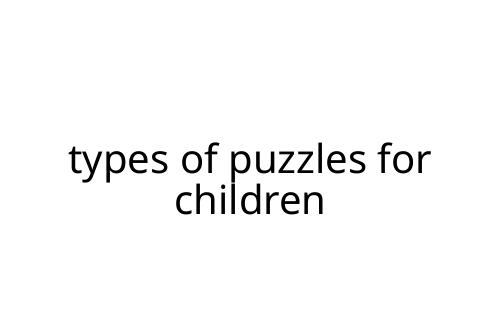types of puzzles for children
Puzzles have a timeless appeal for children. They engage young minds, encourage problem-solving, and deliver quiet satisfaction when the pieces finally click together. If you’re exploring ways to keep kids entertained and challenged, understanding the different types of puzzles for children is useful.
Jigsaw Puzzles
Jigsaw puzzles are classic. Pieces interlock to create a single picture or scene. They come in sizes ranging from toddler-friendly, with fewer and larger pieces, to complex designs for older children. This type helps develop spatial reasoning, patience, and hand-eye coordination. The challenge can be adjusted by increasing the number of pieces or the complexity of the image.
Logic and Brain Teaser Puzzles
Logic puzzles suit kids who prefer a mental challenge over physical assembly. These include riddles, Sudoku for youngsters, and simple deduction games. Brain teasers boost critical thinking, pattern recognition, and flexible reasoning.
Word Puzzles
Word searches, crosswords, and anagrams introduce children to language play. They expand vocabulary, sharpen spelling skills, and improve focus. There are versions for all ages, from basic letter hunts to themed crosswords.
3D and Mechanical Puzzles
Three-dimensional puzzles add an extra layer of complexity. These include building models, interlocking shapes, and even variations like Rubik’s cubes. 3D puzzles push spatial awareness, planning skills, and persistence. They’re particularly popular among tactile learners who like working with their hands.
Educational Puzzles
Some puzzles are designed with direct learning goals. Alphabet or number puzzles teach early literacy and numeracy. Geography puzzles help kids memorize continents, countries, or capitals. Science-themed puzzles might feature the solar system or the human body. These are ideal for integrating learning with play.
Electronic and App-Based Puzzles
In today’s digital world, electronic puzzles and apps offer convenience and variety. From digital jigsaws to matching and sorting games, these can adapt difficulty levels and provide instant feedback. The downside: screen time should be monitored and balanced with hands-on play.
Pros and Cons of Different Types
Pros:
- Puzzles develop a range of skills, from cognitive to motor abilities.
- Options exist for all ages, interests, and learning styles.
- They encourage patience, concentration, and resilience.
Cons:
- Some children may find certain puzzles frustrating without guidance.
- Electronic puzzles, while convenient, lack tactile engagement.
- Too-advanced puzzles can discourage rather than motivate.
Choosing the Right Puzzle
When selecting types of puzzles for children, consider age, patience level, and interests. Start simple for younger kids and increase complexity as they grow. Rotate types to keep things fresh—today a jigsaw, tomorrow a word search.
Final Thoughts
Puzzles do more than fill an afternoon. They nurture curiosity, strengthen problem-solving abilities, and provide rewarding challenges. Familiarity with the different types of puzzles for children helps you choose the right fit for any age or interest, laying the groundwork for lifelong learning and enjoyment.



